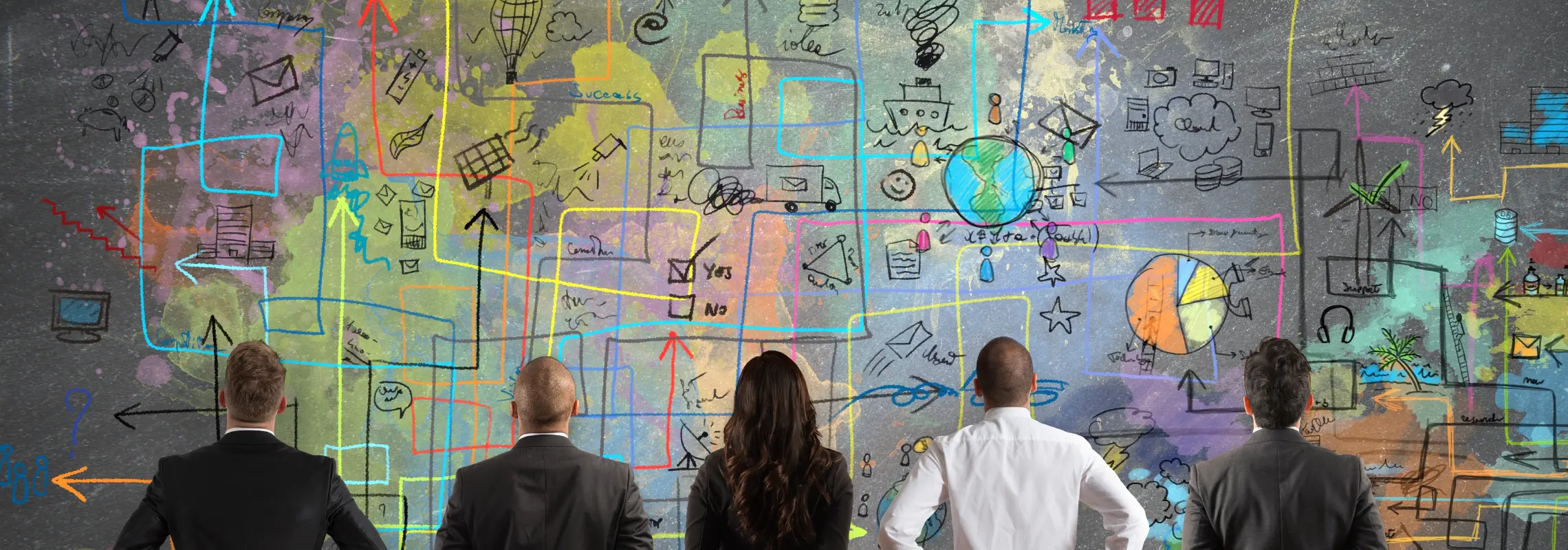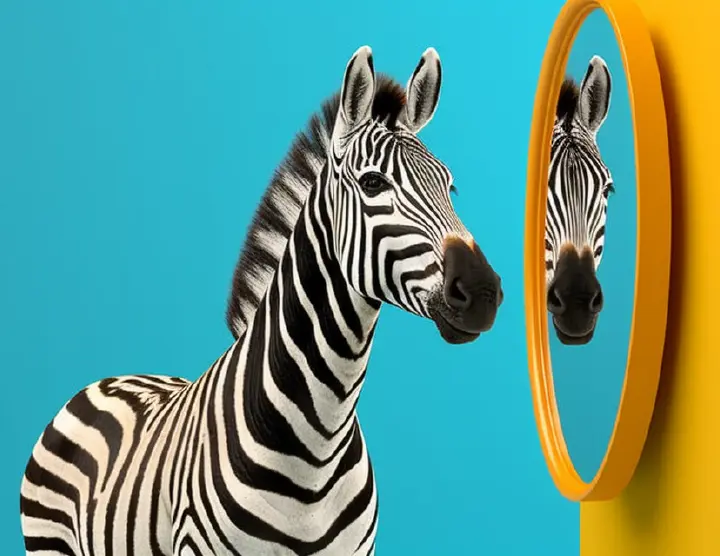Introduction to the Enneagram and complexity
As the complexity of our daily lives and our world increases, the key to competitive advantage lies in the thinking, relating and navigating capabilities that we used to refer to as 'soft skills'. We need a model that can help us make sense of the human and inter-relational complexity of this world, and the rich layers of the Enneagram contain all the complexity and adaptation we need.
It's a VUCA world
If you feel that the world you operate in today is far more complex and less predictable than it was ten years ago, you're not alone. A key challenge of the 21st century is the increased volatility, uncertainty, complexity and ambiguity that modern organisations and people have to cope with.
Leaders and organisations around the world are experiencing ever-increasing levels of complexity and continuous demands for adaptation to keep up with the fast-paced, technology-driven and globalised environments within which they operate. Annual surveys of CEOs globally suggest that the escalating complexity of the business context is a key concern for their organisations.
These challenges are summarised by the acronym 'VUCA', coined by the US military and standing for:
- Volatility: The world we operate in is increasingly volatile and unpredictable, facing constant change.
- Uncertainty: Increased connectivity and frequent, disruptive change make the future hard to predict.
- Complexity: Technological, social, economic and ecological factors change and interact in dynamic ways.
- Ambiguity: There is no single, objective reality - rather, most situations have many possible solutions
These factors together create an environment that places tremendous pressure on our information processing and relational abilities as human beings. While the VUCA factors may be inescapable facts of our contemporary life, we can control how we choose to show up and respond to this complex new world. This suggests that if we want to succeed, produce products and deliver services in this complex world, we must focus on our thinking, our seeing and our relating skills in order to build the competency to thrive.
A complex model for a complex world
"Some systems have a very large number of components and perform sophisticated tasks, but in a way that can be analysed... accurately. Such a system is complicated. Other systems are constituted by such intricate sets of non-linear relationships and feedback loops that only certain aspects of them can be analysed at a time... Systems of this kind are complex. I have heard it said (by someone from France, of course) that a jumbo jet is complicated, but that a mayonnaise is complex." - Paul Cilliers
As the level of complexity of daily life increases, so too does the need to find tools and frameworks that can support us in making sense of this complexity. Complexity theory discourages linear, analytical or overly simplistic thinking. It demands a process of continuing engagement and adaptation rather than a search for fast, simple solutions.
Therefore, we need sense-making frameworks that can hold the ambiguity, complexity and paradox of the world we are navigating, thus helping us to see patterns and navigate successfully. Many of the frameworks and tools used in the field of personality and personal development, however, are based on simple linear models that are stretched by the complexities of the people and systems they are trying to describe. These simpler models often describe behaviour rather than the deeper drivers, filters and paradigms that drive it.
The Enneagram is complex and layered, making it appropriate for use in complex contexts. The Enneagram helps us decode and make sense of both individual human nature and the systems we form as groups, teams and organisations. This is the case because it reflects the depth, complexity and fractal nature of personality and of human systems. It is therefore a fractal model that contains a series of repeating patterns and layers within it.
For example, within the Enneagram symbol and framework there are repeating patterns of threes - three Centers of Structure and Expression, within which we find three Types or personality styles. These Types then break down, overlaid with three Instincts to form three Subtypes within each Type, and so on. This forms literally thousands of possible unique, individualised Integrative Enneagram profiles, where other popular and useful systems describe just three, four, or sixteen types. People are fractal too ⎼ they have different but interconnected and interdependent parts that make up the whole, with subtle layers of patterns that sometimes reinforce and sometimes conflict with each other.
The Enneagram is also not a fixed framework - rather, it reflects system dynamics and possible movements that might help develop a more holistic view. In the Enneagram, the lines that connect the points represent the ways that energy moves within the system and offer directions of exploration, growth and movement. In this way, the Enneagram is a map of complexity rather than a box to put people in. By teasing apart and revealing these patterns, the Enneagram reveals the subtle interplay and dynamics at work when individuals, teams and groups interact in a system.
Ways of seeing and thinking in complex systems
In this increasingly complex and unpredictable world, the traits and qualities that determine individual and business success have begun to change. University knowledge and technical skills are no longer the most important factors in guaranteeing success - rather, the way you think is. The mindset and practices for thinking about complex adaptive systems are very different to those required to thrive in ordered, complicated systems. In a complicated space, the mindset required to thrive is one of certainty - the confidence that there is a right answer and that it can be found and relied upon to produce a predictable outcome. In a complex situation, however, there is often no single 'right' answer, and so openness, curiosity and a lack of assumptions are keys to success.
A systemic thinker can see the complexity of the system, looking beyond the obvious to see deeper patterns and making sense of the bigger picture. One metaphor that is used to describe these different levels of seeing and sense-making is the iceberg. Only around 10% to 20% of an iceberg is visible above the surface ⎼ like the physical artefacts, behaviours and reactions of people in the system. These reactions and physical manifestations are caused, however, by deeper layers, by things that happened in the past, and by unconscious beliefs and assumptions that we cannot see.
The systems thinker who is fit for complexity, has a set of characteristics:
- Meta-awareness (or 'thinking about their thinking'): They are aware of their own thinking patterns, both the risky and the helpful ones, their cognitive biases and habits. They actively work to notice and balance these habits and biases in their thinking, analyses and communication.
- Broad perspectives: Being aware of their paradigms, complexity thinkers constantly work to expand those paradigms and question the assumptions that underpin them. They use conscious techniques and ways to explore further and actively experiment with new and alternative points of view.
- Self-awareness: Clarity of thinking is derailed by the 'paper tigers' of trust issues, insecurities and emotional sensitivities that so often come along with complex social systems. Systemic thinkers work on themselves to deal with their blind spots and triggers, to ensure that they do not get in the way of their thinking, interaction and working together.
How the Enneagram helps us respond to complexity
Our most important resource for navigating this complex world is our mindset; the fundamental beliefs, values, assumptions and experiences that shape how we perceive the world, think, interpret information, interact with others and take action. A systemic thinker can see their own seeing - and observe their own thinking and feelings. This allows them to reflect on how their mental models may be limiting their ability to think systemically and adapt to complexity.
"Mental models are deeply held internal images of how the world works, images that limit us to familiar ways of thinking and acting. Very often, we are not consciously aware of our mental models or the effects they have on our behavior" - Peter Senge
From this description, you can see that the idea of 'mental models' is quite similar to the Enneagram concept of Type fixations. Our Type fixation is based on our view of the world, the filter this worldview or perspective applies to the individual's focus of attention and the limiting perspectives that this can create. In a complex situation, a limited paradigm is a risk. It can cause us to miss important layers of information about the situation and therefore to choose based on our own fears, biases and insecurities rather than deep reflection.
By revealing these limiting paradigms, the Enneagram helps us understand our Type's likely biases and cognitive distortions, opening our eyes to the complexities of the world. This allows us to begin accessing other alternative paradigms and perspectives to fill the gaps in our own. The tool shows individuals the extent to which they are limiting their own point of view and limiting their possibilities for thinking, feeling and acting as a result. The iEQ9 reports highlight which of the holistic perspectives represented by the Enneagram we are missing, blocking or neglecting - shining a light on gaps that could create challenges.
"The greatest danger in times of turbulence is not the turbulence - it is to act with yesterday's logic." - Peter Drucker
An Enneagram-based development journey invites us to escape that limited paradigm, offering clear paths to other and important balancing points of view. We speak about coaching clients to move towards the centre of the Enneagram, where they may have more access to other energies or forms of behaviour when they are appropriate for the situation. Instead of approaching all problems with our old, fixated lens, the Enneagram helps us expand our repertoire of strategies for dealing with different challenges.
The framework and symbol of the Enneagram represents more than a set of personality profiles - it is also a map of the polarities and paradoxes that characterise the complexity of humanity and human systems. Some theorists suggest that the Enneagram diagram reflects the relationships and patterns of energies in the natural world and can thus help us predict some of the tensions and synergies that are possible.
The lines and relationships within the Enneagram describe the dynamics and polarities that are all too common in human systems. For example, the line running between Enneagram Seven and Enneagram One represents the polarity of stability and order vs flexibility and freedom. The lines, wings and development pointers invite us to step consciously into appropriate ways of engaging with the world as we navigate the Enneagram symbol.
Conclusion
One risk in using the Enneagram as a tool for seeing and sense-making in complex systems is the potential for reductionism or over-simplifying that the Enneagram might bring. The Enneagram is not a tool to reduce unique, complex individuals to simplistic sets of labels or traits. It is important to remember that the gift of the Enneagram is in its richness, layered fractals and ability to hold all the diverse individuality that makes us human.
To thrive in complexity, we must grow our self-awareness, experiment with new ways of being in the world, and see broader perspectives - all things that the Enneagram is uniquely positioned to help us do. Further articles in this series explore how the Enneagram helps us make sense of the human interactions in complex adaptive systems, and how the nine different Enneagram Types translate into particular gifts or challenges for navigating complexity.
Navigate and thrive in complexity Get your iEQ9 Report
References
- Meadows, D. (2008). Thinking in systems: A primer. White River Junction, Vermont: Chelsea Green Publishing.
- Senge, P. (2006). The fifth discipline: The art and practice of the learning organisation (revised edition). London: Random House.
- Snowden, David J.; Boone, Mary E. (November 2007). "A Leader's Framework for Decision Making". Harvard Business Review, 69-76.
- Weick, Karl. 1995. Sensemaking in organizations. London: Sage Publications.
- Wheatley, M. (1999). Leadership and the new science: Discovering order in a chaotic world. San Francisco: Berrett-Koehler Publishers.

 What is the Enneagram?
What is the Enneagram?
 Introduction to the 27 Subtypes
Introduction to the 27 Subtypes
 Introduction to the 3 Centers
Introduction to the 3 Centers
 Wings
Wings
 Lines and Integration
Lines and Integration
 Enneagram History & Origin
Enneagram History & Origin
 Enneagram for Myself
Enneagram for Myself
 Enneagram for Practitioners
Enneagram for Practitioners
 Enneagram for Business
Enneagram for Business
 iEQ9 Individual Reports
iEQ9 Individual Reports
 iEQ9 Team Reports
iEQ9 Team Reports
 iEQ9 Questionnaire
iEQ9 Questionnaire
 Training Events
Training Events
 Level 1 iEQ9 Accreditation
Level 1 iEQ9 Accreditation
 Level 2 Enneagram Team Dynamics
Level 2 Enneagram Team Dynamics
 International Enneagram Conference
International Enneagram Conference
 iEQ9 Community of Practice Events
iEQ9 Community of Practice Events
 About Integrative9
About Integrative9
 Meet the Faculty
Meet the Faculty
 Testimonials
Testimonials
 Contact Us
Contact Us




